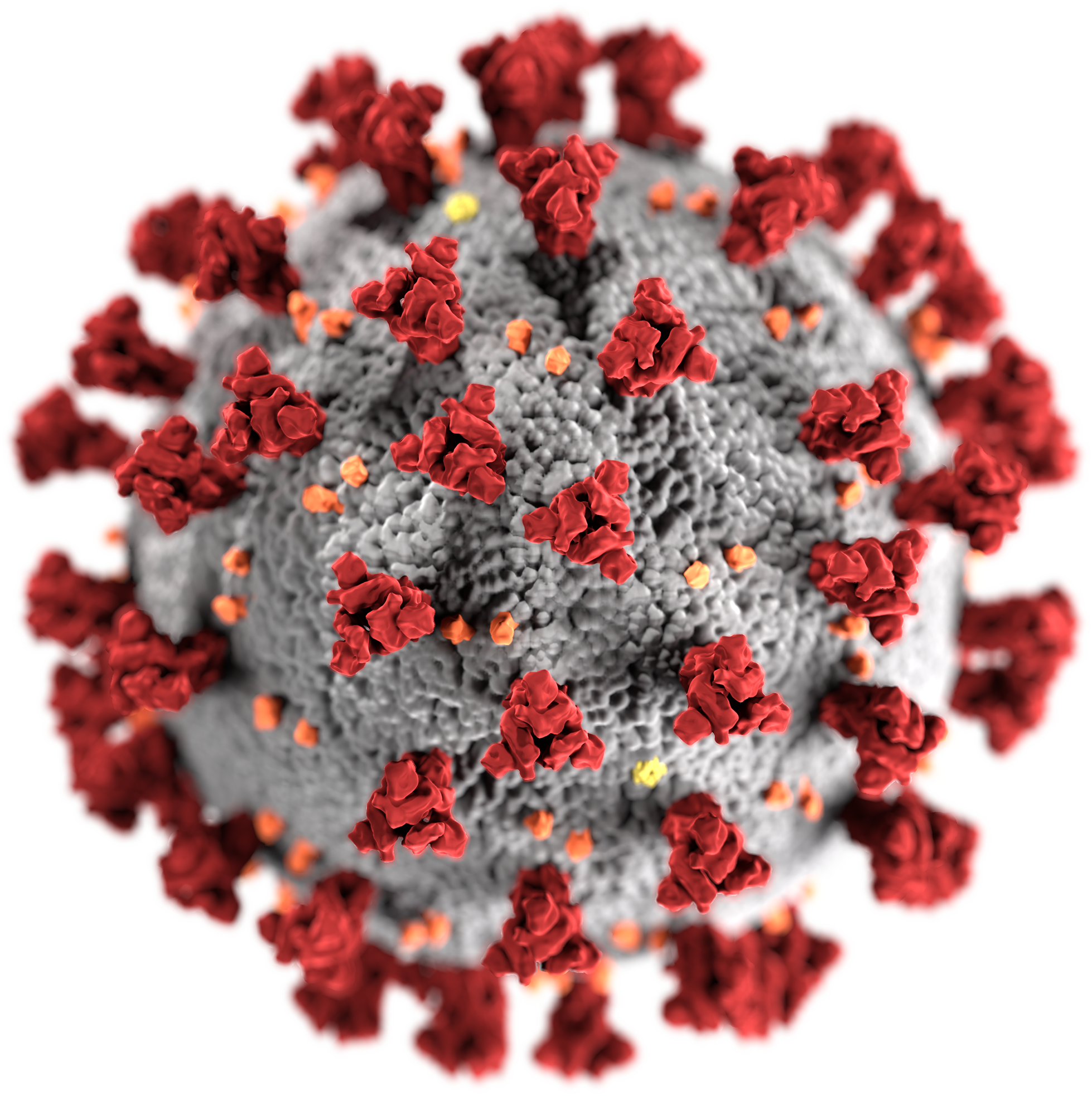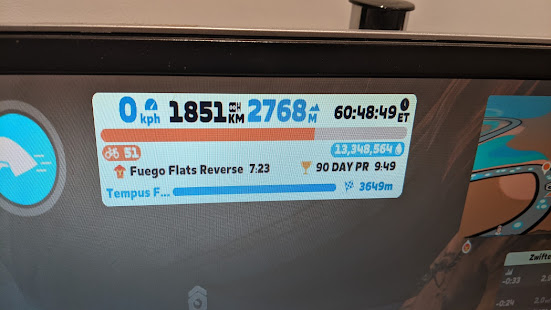Pixelated Pro Pelotons and COVID-19
Ned Boulting wrote a fantastic piece about the
2020 pro-racing scene without the racing. As this is a science and cycling blog, the appearance of nCOVID-19 and the abandonment of the pro calendar and my own racing and riding is taking a shock no-one could have expected in late 2019. As the global coronavirus
outbreak makes waves around the globe, Ned touches on a number of important
pertinent points where the future as expected isn't going to go the way we
expected. The Asian ^& Pacific races, Classics, Giro, TdF, Olympics, Vuelta, Worlds
and end of year classics predicted for 2020 at the end of 2019 won't play out
the way they were planned. Globally nCOVID-19 has the potential to
kill in the millions with a 3.4% mortality rate, giving the real possibility
that someone within my 6 Degrees of Separation will die. This can
be immediate family through to a business contact or someone within my social
or professional links. Over the past few weeks I've been paying
attention to the epidemiologists and economists on what impact this will
have. My work life is already being massively impacted by precautions taken at work, working from home, supply chain collapse and potential economic implications
far greater then the previous global economic down turns and recessions. My
personal life is likely to be either directly effected (I or my family becomes
ill) or indirectly (access restrictions, others panic buying stripping consumer supply
chains and volatile prices). Which means things: predictions!
 |
| https://upload.wikimedia.org/wikipedia/commons/8/82/SARS-CoV-2_without_background.png |
Predictions
Viral:
1)
My prediction for 2020 is that the viral spread will be difficult to contain
and the spread will continue for the remaining of Q1 and Q2.
Into Q3 the viral spread will still
be in pockets but either being managed or reducing due to changes in the
environment. As the northern hemisphere comes out of winter, the virus
will find it harder to jump from host to host which will aid slowing the
spread. Where government decrees of curfews, travel bans, isolation and quarantine procedures will put restraint on the spread, humans have the ability to bend, flaunt and overrule these initiatives which will mean that the transmissions will continue. Changing in humidity and temperature will have a much greater impact. However, persistent clusters (geographically) will continue until
a method of vaccination can remove it or the risk will be that when the winter
returns in 9 months, a secondary strain may do a second epidemic until the next
vaccine can be adapted from the nCOVID-19 strains protein. Any vaccine
for the virus will take a relatively long time in development and distribution
to get into populations. Even with mass vaccination programs, the
speed to drop infection rates to a RO value less than 1 will take some time to
do. This means that restrictions are going to be in place well into
the second half of the year. Mass gatherings will be curtailed
where possible and there will be tester events to see if re-introduction of
accesses either has no effect or causes an incident relapse.
Population and society
2) Mortality: A virus
is a much smarter entity than humans, there will be some needless deaths.
The DNA/RNA differences will be
vast between a human and the virus, but a virus cannot have stupidity. Humans can be stupid. And invariably are stupid. Although the Risk Level is currently low in
most OECD countries, the population most at risk from death due to the
nCOVID-19 virus are those who are already weakened in immune response or have
respiratory problems; so the mortality rate currently pegged at 3.4% is not a
uniform 3.4% by demographic. You find that the rate is far higher
in the susceptible groups and diminishes in those who have greater fitness and
stronger immune systems so in effect, we will see a thinning of the
"weak." I quote mark weak not as a derogatory term, but
as a reference to those liable to illness. This is where human stupidity
comes in. At the moment the general media (news and social) are feeding
on the spread which is causing panic behaviours,
with the potential to harm through the removal of essentials from where they
are needed. If areas where humans interact (shopping centers, work
places, hospitals, GP surgeries etc) are denied hand sanitisers because these
have been horded for personal use in distribute locations, then disease spread
at locations where transfer is likely to be greatest isn't going to be
stopped.
3) The net global mortality
and financial correction has the potential for near to long term benefit.
The OECD countries have gone
through tremendous expansion and prosperity for the past 70 years. We've
had a massive increase in living standards and conditions, wages, net value and
worth, air quality, employment rights and safety, disposable incomes, human
rights, equalities and the lowest conflict deaths per capita ever.
Our population has boomed. The holistic metric of human
health is extremely complex and there's little opportunity to say if or when
"peak human" was or will be, but where life expectancy values were
showing continual increase, recent we've been observing a slowing and
decline. And where increase in life expectancy (quantity) is seen
as the positive metric, it doesn't take into account the condition of the human
at death (quality). Healthy all through life and sudden death at
80; or declining health supported by medicine since 60 with death at 85?
Avoiding the conspiratorial
undertones, the appearance of the nCOVID-19 virus appears to be the potential
natural correction to a lot of the human races problems. Where
increased prosperity has brought increase life comfort, the reality is that it
has raised new human problems. Over consumption and consumerism, coupled to a the heavy reliance on
pharmaceutical products to overcome the negative effects of our
excessive lifestyle and aging is causing a physical and mental human crash
while destroying the planet we live on. Since the isolation of penicillin in the mid 20th century, it's taken us less than 50 years to abuse antibiotics to the point where antibiotic resistance is a threat regressing us back to the 1930's. We may have higher life
expectancy values, but the methods of getting there is a fight between the
opposing forces of life styles which are prematurely aging us pitted against
the number of pharmaceutical and medical interventions to keep us going. Currently, 15% of the US population over the age of 65 have the possibility of major adverse drug-drug interactions due to 84.1% of the population being dependent on 1 prescription drug, and 30.6% dependent on at least 5 concurrent prescription medications. In a recent release, 70% of the US is overweight, 40% of US citizen are obese with 10% sever
obese and this isn't just an effect on our waistlines. The drain
on productivity from impaired cognitive ability, dementia, anxiety and depression and then increased medical cost of care puts
an inordinate amount of strain of society through loss of action and potential;
and the inefficiency of maintaining a workforce with cost associated with
medical covers and insurances. As cardio pulmonary function is negatively
impacted by excess weight and nCONVID-19 having the potential to cause
(in more severe cases) pneumonia, severe acute respiratory
syndrome, kidney failure and even death in those who already have
these organs overloaded, the mortality profile currently seen in the older age
categories has the potential to reach to the younger groups through physical
health. (Interestingly, as the virus is associated with ACE2 "receptor" in the lung lining as the point of binding in egress into the body. However, morbidity with smokers is lower then in non-smokers. In pre-peer reviewed discussion, this is potentially due to the speed of immune response - in smokers were cilia are routinely destroyed therefore more susceptible to infection, the immune system is effectively "pre-primed" to respond by already being in an active state. A good discussion is found here). Should nCONVID-19 truly take hold in populations, my sympathies
will be to those at risk in social-economic hardships, the fit elderly and
those with genetic defects. Where we'd likely see higher mortality rates
outside of the young, elderly and genetically pre-disposed, is in the obese and
inactive.
In much the same way we will have
economic corrections as stock value outstrips the market value and a shock
brings the market back in alignment (yield curves have shown inversion signaling the likelihood of a
recession in 2020), the nCOVID-19 virus has the potential to force a human
correction in behavior and health. Much of the talk in reply to the
pandemic has been "a war like footing" which is extremely timely with
the increase of focus in climate change. No one like change until
changes starts and then continual change is normal. This will be
the case.
In 2020 we've had the Australian
bush fires which were regional and little interest beyond clicks outside of
AUS. We have Global Climate Change were the blame is passed pillar
to post and not addressed. But nCONVID-19 has torn up the rule book
and forced change. It's impact is everyone, all the time and the
personal effects will be felt throughout 2020. And the mobilisation
to prevent deaths will show that global mobilisation can be done for other
global problems. Currently, the opinion is indicating that global CO2 emission are likely to (temporarily) reduce as a result of the pandemic. The reduction in Chinese emissions has clearly indicated that the impact on production can be hit.
The phrase "Let the World
Burn" will be politically incorrect for climate change, but "Let the
Fat Die" shouldn't need defending.
In the next year we will see the
deaths of those we've loved, but this should also be the clear message of we
need to get our shit together, reduce our ecological footprint, improve our
health, get off suckling the teat of lifestyle corrective drugs and tackle
fixing the mental health problems this is causing.
Cycling related:
So to bring the medical back to the
25mm rubbers.
The consensus appears to be that
professional cycling in 2020 will not be the same as the 2019 pro season.
Evening crits, TT's, one day classics, mini-tours, world champs, Olympics
and Grand Tours have the potential for cancellations, postponing or financial
collapse. The pro calendar and related financial backing is likely
to be decimated in the next 12 months. In the grand scheme of
things, pro-cycling is the 1% at the top of cycling but inspires the 99% to
ride and keep active. In financial value, money flows into the
professional ranks through advertising and sponsorship to filter down to other low-level
projects. So, by removing the top tier, what's the future to hold?
There are around 1,000 riders in
the World Tour and Pro-Continental teams on liveable wages who will now have to
be rethinking their year with indefinite objectives to build towards.
They will be considering their health risks and exposures as a pro-rider will
spend a great deal of time in airports and public spaces. Risking
an infection would put a rider out by months. Sponsors will be
wanting these riders to be seen because that's why the sponsor them. So
what to do??
Predictions and possibilities - eSports will boom.
My prediction is that the financial
sense of cycling will come into check. "Force majeure" is going
to be a term exchanged a lot this year on insurance risks and cancellation
charges and with the physical stress riders put themselves through at minimal
body fat levels, a viral infection in the pro-peloton will erode the rider
value immensely. Would a rider sue the team or race fro being
forced to a hotel where they can get a virus and wipe out all form?
Would not going void contract obligations? Events will get
cancelled as by definition, the races can't be held behind closed doors.
Even Velodrome will be quarantined.
And where there's a problem,
there's always someone on the way to a solution. eSports.
Platforms such as Peloton and Zwift have the opportunity for massive
capitalisation as both amateurs and pro-cyclist looking for somewhere to ride
and compete. There are brands such as Peloton, TrainerRoad,
Sufferfest, Zwift, Wahoo, Taxx, Sigma, Garmin, Bryton etc all in the area of
eSport software and equipment providers to supply the market (providing they're
not hit by Chinese supply chain problems).
Where Zwift is currently a privately held company with second round funding in battle with Peloton which went to IPO in Q4 2019, this could be the year where Zwift can capitalise on a lot of amateur athletes under curfew and riders without races.
Watch this space.



Comments
Post a Comment